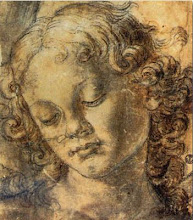 The Dead Sea Scrolls Uncovered describes the discovery, disclosure process, and content of the many scrolls found in some of the caves near Qumran on the Dead Sea. With this book, for the first time the public was enabled access to the most intriguing texts from the unpublished corpus and allowed to judge for itself. Providing English translations as well as transcriptions into modern Hebrew characters, this book makes available 50 texts. Accompanied by commentaries, these texts provide insights into Messianism, an alternative presentation of the flood story, ecstatic visions, prophecies, Mysteries, astrology, divination and much more.
The Dead Sea Scrolls Uncovered describes the discovery, disclosure process, and content of the many scrolls found in some of the caves near Qumran on the Dead Sea. With this book, for the first time the public was enabled access to the most intriguing texts from the unpublished corpus and allowed to judge for itself. Providing English translations as well as transcriptions into modern Hebrew characters, this book makes available 50 texts. Accompanied by commentaries, these texts provide insights into Messianism, an alternative presentation of the flood story, ecstatic visions, prophecies, Mysteries, astrology, divination and much more.We are given Messianic and Visionary Recitals (of Noah and Michael), prophets and pseudo prophets (angels of Mastemoth and the rule of Belial, pseudo Jeremiah, second Ezekiel, pseudo Daniel, the vision of the four kingdoms), biblical interpretation (pesher, Florilegium, calendria) calendrical texts and priestly courses, testaments and admonitions (righteousness, truth, judgement, knowledge, wisdom,) legal minutiae, and the claim that works are to be reckoned as righteousness. Divination, magic and are explored in brontologion (future text), selinedromion (moon text), and thema mundi (world horoscope) articles. The exacting roles of the Maskil and Mebakker are delineated, as is the Way.
The tone of the scrolls is one of unbending nationalism and anti-corruption in the language of righteousness indignation. No peaceful Essenes here. The scrolls are an expression of dazzling faith and ecstatic vision and definitively identify the Essenes as a group, a movement. This is nothing less than the literature of the Messianic Movement in Palestine. Responsible for the uprising that led to the destruction of the Temple in Jerusalem, its later stages are virtually indistinguishable from the rise of Christianity in Palestine. As noted in Reclaiming the Dead Sea Scrolls and The Dead Sea Scrolls Today, this book too sheds light on the formation of early Christianity.




No comments:
Post a Comment